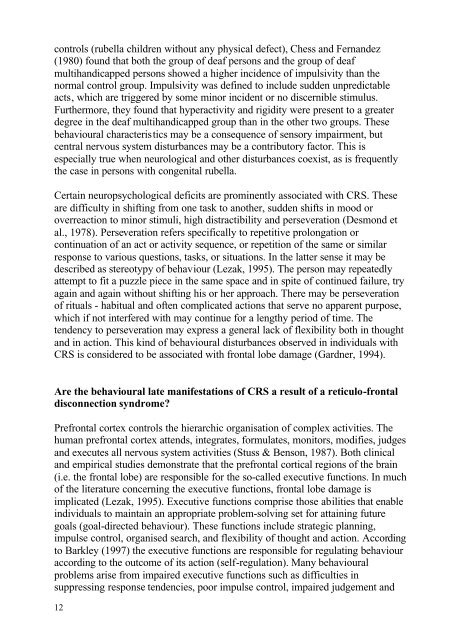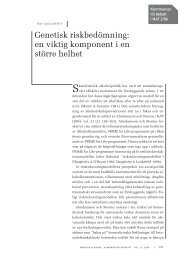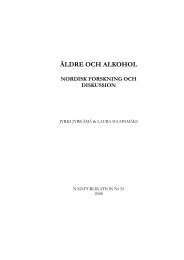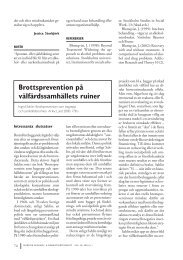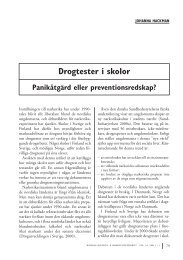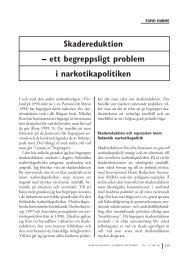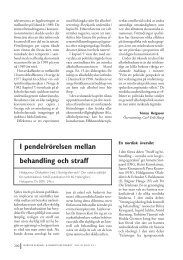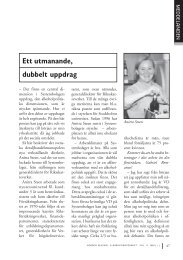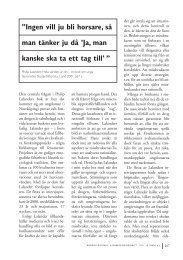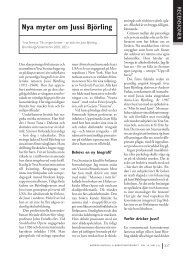CONGENITAL RUBELLA SYNDROME
CONGENITAL RUBELLA SYNDROME
CONGENITAL RUBELLA SYNDROME
Create successful ePaper yourself
Turn your PDF publications into a flip-book with our unique Google optimized e-Paper software.
controls (rubella children without any physical defect), Chess and Fernandez<br />
(1980) found that both the group of deaf persons and the group of deaf<br />
multihandicapped persons showed a higher incidence of impulsivity than the<br />
normal control group. Impulsivity was defined to include sudden unpredictable<br />
acts, which are triggered by some minor incident or no discernible stimulus.<br />
Furthermore, they found that hyperactivity and rigidity were present to a greater<br />
degree in the deaf multihandicapped group than in the other two groups. These<br />
behavioural characteristics may be a consequence of sensory impairment, but<br />
central nervous system disturbances may be a contributory factor. This is<br />
especially true when neurological and other disturbances coexist, as is frequently<br />
the case in persons with congenital rubella.<br />
Certain neuropsychological deficits are prominently associated with CRS. These<br />
are difficulty in shifting from one task to another, sudden shifts in mood or<br />
overreaction to minor stimuli, high distractibility and perseveration (Desmond et<br />
al., 1978). Perseveration refers specifically to repetitive prolongation or<br />
continuation of an act or activity sequence, or repetition of the same or similar<br />
response to various questions, tasks, or situations. In the latter sense it may be<br />
described as stereotypy of behaviour (Lezak, 1995). The person may repeatedly<br />
attempt to fit a puzzle piece in the same space and in spite of continued failure, try<br />
again and again without shifting his or her approach. There may be perseveration<br />
of rituals - habitual and often complicated actions that serve no apparent purpose,<br />
which if not interfered with may continue for a lengthy period of time. The<br />
tendency to perseveration may express a general lack of flexibility both in thought<br />
and in action. This kind of behavioural disturbances observed in individuals with<br />
CRS is considered to be associated with frontal lobe damage (Gardner, 1994).<br />
Are the behavioural late manifestations of CRS a result of a reticulo-frontal<br />
disconnection syndrome?<br />
Prefrontal cortex controls the hierarchic organisation of complex activities. The<br />
human prefrontal cortex attends, integrates, formulates, monitors, modifies, judges<br />
and executes all nervous system activities (Stuss & Benson, 1987). Both clinical<br />
and empirical studies demonstrate that the prefrontal cortical regions of the brain<br />
(i.e. the frontal lobe) are responsible for the so-called executive functions. In much<br />
of the literature concerning the executive functions, frontal lobe damage is<br />
implicated (Lezak, 1995). Executive functions comprise those abilities that enable<br />
individuals to maintain an appropriate problem-solving set for attaining future<br />
goals (goal-directed behaviour). These functions include strategic planning,<br />
impulse control, organised search, and flexibility of thought and action. According<br />
to Barkley (1997) the executive functions are responsible for regulating behaviour<br />
according to the outcome of its action (self-regulation). Many behavioural<br />
problems arise from impaired executive functions such as difficulties in<br />
suppressing response tendencies, poor impulse control, impaired judgement and<br />
12


